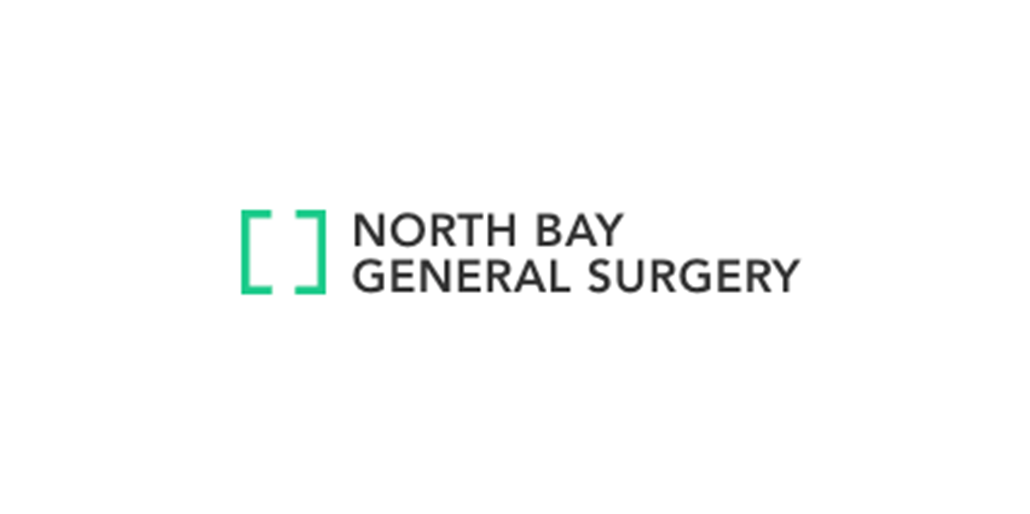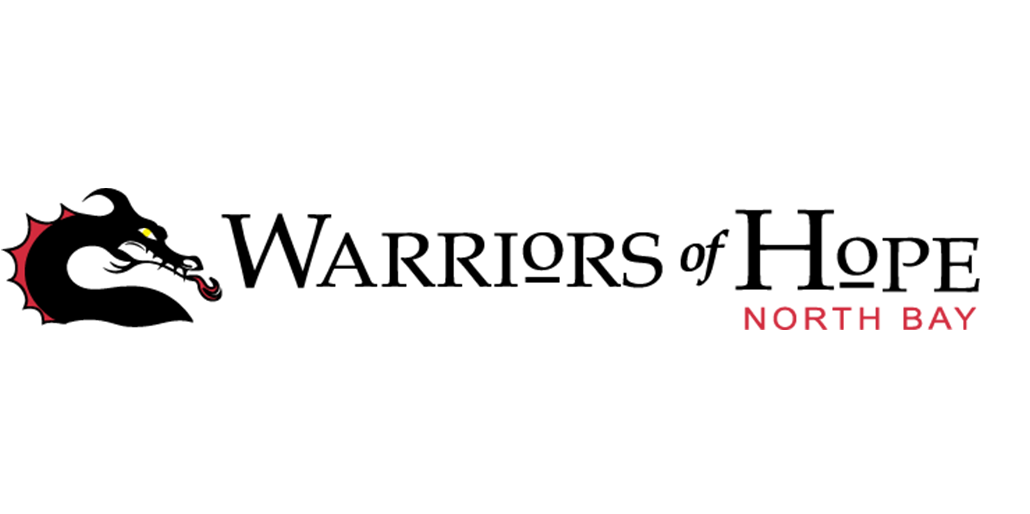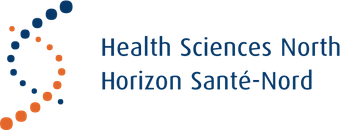Cancer Community Nippising
Breast
Cancer
Summary
Cancer Community Nipissing is meant to help you locate local resources for breast cancer screening, treatment and local resources you may need during a cancer journey. We have provided some very basic information to help you to understand and find the resources in our region. For more comprehensive breast cancer information, please go to one of the online resources recommended.
If you are aware of other local resources that have not been included here please
let us know. We want your updates!
Breast Cancer: Why do I need to know about this?
1 in 8 women will get diagnosed with breast cancer and about 1 in 830 men (about 1% of all breast cancers). Breast cancer can occur at any age:
- 17% of breast cancers occur under 50
- 51% between 50 and 70
- 32% 70 and older
Screening for breast cancers can allow cancers to be found before they are felt and at earlier, more treatable stages.
For more information about breast cancer see:
Breast Cancer Screening
Breast cancer can be found by physical examination of the breasts or by mammography.
Physical Exam of the Breast
Availability: Local
This check can be done by the individual or their primary healthcare provider, such as a doctor or nurse practitioner. While these checks may be included in routine physical exams, they typically occur only once every year or two—leaving significant gaps between assessments.
An advantage of performing your own breast exam is that you can do it every few months, allowing you to detect any new lumps early for prompt evaluation. However, a challenge is that breasts naturally have some lumpiness, which can make it difficult to distinguish between normal and abnormal changes. If you're unsure or discover a lump, scheduling an appointment with your primary healthcare provider for a professional assessment is always a good idea.
Mammogram (Breast Imaging)
Availability: North Bay, Sturgeon Falls
This is the primary screening tool for breast cancer, but it is also used for diagnosis after detecting a lump or for ongoing monitoring. During the procedure, the breast is compressed between two plates while an X-ray is taken. If any areas of concern are identified, additional imaging may be required for further evaluation.
Screening mammograms are available through the Ontario Breast Screening Program, while diagnostic mammograms for specific concerns are conducted at hospital radiology departments and must be ordered by a primary care provider.
For individuals with a strong family history of breast cancer or a relative who has tested positive for a breast cancer gene, high-risk screening options may be available. Your primary caregiver can put in a referral if you meet the criteria.
Ontario Breast Screening Program
If you are between 40 and 74 you can book your breast cancer screening appointment by calling one of the following locations:
Genetics
Availability: Sudbury
Some breast cancers can be related to a familial or genetic mutation. Genetic testing could help identify these mutations, this information can then be used to reduce your risk of future breast cancer, or reduce the risk of breast cancer in your close family members. There are strict criteria for who is screened. This is done by a referral from your family doctor, surgeon or oncologist. Our center is the Northeastern Ontario Medical Genetics Program in Sudbury.
Post Mammogram: Investigating Areas of Concern
To further investigate areas of concern, the first step is often additional imaging, such as magnification views with mammography or an ultrasound of the area. While imaging helps identify potential issues, it does not diagnose breast cancer. A definitive diagnosis requires examining the actual tissue, which is done through a biopsy of the affected area.
Biopsy of the breast lesion:
Breast biopsies are performed by either an interventional radiologist or a surgeon. In some cases, the biopsy may be done during the imaging test. If this isn’t possible, your primary care provider will refer you for the procedure.
The biopsy involves numbing the area with local anesthesia and using a needle to collect several tissue samples, which are then sent to pathology for analysis. Results typically take between 4 to 14 days, and you will need to follow up with your primary care provider to review them.
Breast Cancer Positive: What Now?
If your breast cancer biopsy comes back positive, your primary care provider will refer you to a breast cancer surgeon, as well as specialists in chemotherapy and radiation therapy at the Northeastern Ontario Cancer Centre. Treatment options may include surgery, radiation therapy, or chemotherapy, with the specific approach and sequence depending on the details of your cancer. These specialists will work with you to develop a personalized treatment plan and help you navigate your options, including the choice to pursue limited or no treatment, as there are many valid reasons an individual may make that decision.
Treatment
If you are diagnosed with breast cancer, your primary care provider or surgeon will discuss the types of treatment that may be necessary. Your initial treatment plan will be developed through shared decision-making, considering factors such as the stage of cancer, your age, overall health, and personal goals. Different individuals have varying comfort levels with treatment options, and your plan may include surgery, radiation, chemotherapy, and/or hormonal therapy. If multiple treatments are required, the order in which they are given will depend on your specific needs.
See
Post Surgery Needs for information on useful post surgical information
Breast Cancer Surgery
 Visit northbaygeneralsurgery.com
Visit northbaygeneralsurgery.comAvailability: Local
North Bay General Surgery has specialists who perform breast cancer surgery as well as oncoplastic surgery, which helps improve the breast's appearance after a lumpectomy. Some reconstruction options are available locally at the time of the initial surgery, and your surgeon will discuss these options with you. If more complex reconstruction is needed, a referral to a plastic surgeon can be arranged through your local surgeon or primary care provider.
Plastic Surgery / Reconstruction
Availability: Remote - Sudbury or larger centres
Plastic surgeons do general plastic surgeries and breast reconstructions post breast cancer. There is no time limit to getting the reconstruction done and it is fully covered by OHIP. You can self-refer.
Currently, we do not have a plastic surgeon in North Bay
Radiation
Learn more at cancer.caAvailability: Sudbury
Radiation therapy treats breast cancer by using high-energy rays to target and destroy cancer cells. This is done externally, and preparation involves a mapping session where the treatment area is precisely marked. A custom gel mold is created to ensure consistent positioning, and small tattoo dots are placed in four locations to guide accuracy.
Radiation therapy is available in Sudbury at the Northeastern Ontario Cancer Centre. Your primary care provider or surgeon will refer you to a radiation oncologist, who will assess whether treatment is necessary and determine the number of sessions required. Treatments are typically short, lasting 15-30 minutes, and are scheduled Monday through Friday for several weeks, with weekends off. Patients can choose to travel daily or arrange accommodations in Sudbury. If an appointment is missed due to weather or unforeseen circumstances, the session will simply be rescheduled at the end of the treatment plan.
Chemotherapy
Learn more at cancer.caAvailability: North Bay, Sturgeon Falls, New Liskeard, Sudbury
Chemotherapy uses powerful drugs to destroy cancer cells by targeting rapidly dividing cells throughout the body. While effective against cancer, it can also affect healthy cells, leading to potential side effects.
Most types of chemotherapy circulate through the bloodstream, allowing the drugs to reach and destroy cancer cells, including those that may have spread beyond the primary tumor. For more detailed information, visit Cancer.ca.
If chemotherapy is recommended, you will be referred to the Northeastern Ontario Cancer Centre in Sudbury to see an oncologist—a doctor specializing in chemotherapy. They will determine if treatment is necessary and which type would be most beneficial. Chemotherapy is typically administered at the closest available hospital, including those in North Bay, Sturgeon Falls, New Liskeard, and Sudbury. Treatment schedules vary, but most patients receive therapy every 1-3 weeks, with each session lasting about four hours. In many cases, a PICC line is required for treatment.
Should I Do Anything to Get Ready for Treatment?
This may depend on how much time you have between diagnosis and therapy. But this can give you tips on things you can do in advance to help speed up and improve your recovery.
Physiotherapy
Learn More About PhysiotherapyGetting your body ready for surgery and treatment may help speed your recovery. Even a few weeks of moderate exercise and strength training prior to surgery or treatment can help speed up and improve your recovery.
Nutrition
Learn More About NutritionThere are no specific foods that should be avoided once you have a diagnosis of breast cancer. Eating a well balanced diet will help support your body through treatment and recovery.
Quitting Smoking
Learn More About Smoking CessationSmoking while undergoing treatment will increase your risks of complications, such as infections, and poor wound healing. There are numerous supports available to help you quit smoking prior to surgery or treatment.
Peer Support
Peer support can make a huge difference. There are many, many things we don’t know as we go through this process. Some questions will be answered by your care team. But having the support of someone who has gone through it themselves can be invaluable to help with all of your less medical questions. Or even better, the questions you didn’t know to ask. And honestly, sometimes you just need to have coffee with someone who’s been there.
Local Peer Support
Ask Your Specialist / Family Doctor
Ask your specialist or family doctor if they know of a breast cancer survivor that would be willing to be your peer support. There are lots of survivors that would love a chance to help but are not officially part of any programs.
Warriors of Hope Breast Cancer Survivor Dragon Boat Racing Team
 Learn more at warriorsofhope.com
Learn more at warriorsofhope.comComraderie - Courage -Commitment - Compassion
The team’s vision is to demonstrate the physical and mental benefits of exercise for breast cancer survivors in living a full and active life. The team is primarily about fitness after cancer but are very open to helping other breast cancer patients. It's always worth making contact to see what support can be offered and if someone on the team is a close enough match to your circumstances and cancer to help answer questions.
Online Peer Support or Support Groups
Canadian Cancer Society Peer Support Program
 Join the Community!
Join the Community!This is a safe space where you can connect, learn and share your stories with people with similar experiences with cancer.
Phone: 1-800-263-6750
Symptom Management
Northeast Cancer Centre of Health Sciences North:
 Learn More at hsnsudbury.ca
Learn More at hsnsudbury.caSupportive Care Program: (705) 522-6237 ext. 2175 or 1-877-228-1822 ext. 2175
Post Treatment Follow Up
Follow up after your treatment for breast cancer will involve your Oncologist, Surgeon, and Family physician. It is recommended that patients with a history of breast cancer have a mammogram annually. This will often be ordered by your Surgeon or Oncologist for the first 5 years after your treatment, and then your primary care provider following that.
Post Surgery Needs
Basic Post Surgery Exercises
Download the BookletIt is common to have pain and decreased mobility in the shoulder following breast surgery. It is very important to get that arm moving early to avoid long term issues with stiffness and pain. Your breast surgeon will often provide a booklet of simple exercises to help with treating this. The booklet can also be found in the following link.
Physiotherapy
Learn More About PhysiotherapyA physiotherapist can help guide you through the recovery period. Sometimes it’s hard to know when to push your body and when to give it some extra rest. They can also help you identify if you are starting to get lymphedema.
Lymphedema Massage
Learn More About LymphedemaLymphedema is a condition involving fluid buildup that causes swelling—often in the arms or legs—commonly following cancer treatments like surgery or radiation. Early detection and management are essential, as prompt treatment can reduce discomfort, prevent complications, and improve mobility. While not everyone will develop lymphedema, those at higher risk are encouraged to consult their care team and prepare in advance.
Clothing
Special adapted clothing to help with recovery after surgery. Camisoles that have drain pockets,Mastectomy and lumpectomy bras, Mastectomy bathing suits. These can often be found at certified suppliers of breast prosthesis and supplies. Also see esthetics and clothing section. Link here
Donna Lee’s Mastectomy Services:
Specializing in Breast Prosthesis, full/partial, Mastectomy bras, and Recovery Care Garments. https://www.donnaleesmastectomyservices.com/
Robinson's Pharmacy:
Certified Mastectomy supply specialists, carry bras and recovery garments. Prosthesis, and lymphedema compression garments.
Breast Esthetics - Medical and Otherwise
Breast Prosthesis Post Mastectomy
A Breast prosthesis is an artificial breast form. It gives the breast a more natural shape after mastectomy or breast conserving therapy.
External Knitted Breast Prosthesis
Visit knittedknockerscanada.comAvailability: North Bay, Sturgeon Falls, Online
Knitted Knockers are special handmade knitted breast prostheses for women who have undergone mastectomies or other procedures to the breast. Some women find traditional breast prosthetics too expensive, heavy, sweaty and uncomfortable. Also traditional prostheses often cannot be worn for 6-8 weeks after surgery and need to be ordered. Knockers can be worn directly after your surgery.
Knitted knockers are soft, comfortable, beautiful and when placed in a regular bra they take the shape and feel of a real breast. Knitted knockers can also be used to fill the gap for breasts that are uneven and easily adapted for those going through reconstruction by simply removing some of the stuffing.
Some women prefer to weight their knocker with a pebble or a small stitch in the bra to keep them in place. The knitted knocker can also be used in your prosthetic bra or in a post-op camisole as a lightweight choice.
These are available for FREE. They are knitted with love by our community members.
See knittedknockerscanada.com for more information. Patterns and video tutorials are available on this website. These were developed and shared by knittedknockers.org
North Bay:
knittedknockernorthbay@gmail.com: These volunteer knitters supply both the North bay hospital and general surgeon’s office free of charge. They are also happy to take custom requests.
- North Bay General Surgery Office
- North Bay regional Health Centre Chemotherapy unit
Sturgeon falls:
- Buttons Quality Fabric and Yarn, Sturgeon Falls: They carry the yarn for knitting the knockers. They act as a collection point for the finished knockers and drop them off at the mammogram unit. They can be picked up for free at either location.
- West Nipissing General Hospital: Mammogram unit
Online:
External Silicone Breast Prosthesis
Silicone breast prostheses have the advantage of weighing down the bra better and holding their shape well. They can’t be worn until you are fully healed, which often takes 6-8 weeks and needs to be ordered specifically for you. See local locations to get advice and order them. You need to purchase them up front but the assistive device program refunds the cost.
Ministry of Health and Long Term Care ADP:
https://www.ontario.ca/page/assistive-devices-program
First Nations and Inuit Health NIHB: https://www.sac-isc.gc.ca/eng/1572537161086/1572537234517
Donna Lee’s Mastectomy Services
Specializing in Breast Prosthesis, full/partial, Mastectomy bras, and Recovery Care Garments. By appointment only.
Certified Mastectomy supply specialists, carry bras and recovery garments. Prosthesis, and lymphedema compression garments.
“Experienced certified mastectomy fitters provide emotional support and expertise in fitting mastectomy products in a comfortable and private atmosphere. We will properly fit your breast form to your individual needs and lifestyle assuring your natural look, comfort and balance.
We are a registered mastectomy vendor for the Assistive Devices Program and Non-Insured Health Benefits. We provide bilingual service.”
Bras and Accessories
There are a few approaches to bras post breast surgery. There are bras that are specific for post mastectomy and are set up to insert your breast prosthesis. There are bras that allow for inserts if you have uneven breasts or divots. And there services that fit bras specifically to you.
Post Mastectomy Bras & Inserts
Robinson's Pharmacy & Health Care Pharmacy: (Availability, Sudbury)
- https://robinsonspharmasave.ca/locations/robinsons-pharmasave/
- https://robinsonspharmasave.ca/locations/health-care-pharmacy/
Bras and bathing suites are only available at the Sudbury location. Once fitted, they can be ordered through Robinson’s Pharmacy, North Bay.
Fitted Bras not Specific to Mastectomy
Cintra Mae’s Lingerie & Luxury: (Availability, North Bay)
Private, professional fittings for undergarments.
Location: 163 Main St. W., North Bay, ON, Canada, Ontario
Phone: (705) 474-1000
Email: cintramayslingerie@cogeco.net
Facebook: https://www.facebook.com/profile.php?id=100057683760429
Custom Bras
There are individuals that sew custom bras. They can often make beautiful bras with the appropriate inserts to cover breast divots, uneven breasts and accommodate breast forms. These individuals generally have to be found through sewing shops, online or by word of mouth. Let us know if there is someone in your community currently doing this.
Mastectomy Bras & Accessories
Availaibility: Online
The House of Bras:
The House of Bras started with only bras, and quickly heard the urgent need for mastectomy products. Their mission is to help women look and feel their best!
Website: https://the-house-of-bras.myshopify.com/collections/all
Brand New You Mastectomy Boutique:
Brand New You Mastectomy Boutique
has been serving the specials needs of
Breast Cancer Survivors in Thunder Bay and Region since 2001 with
- Breast Prostheses
- Post-mastectomy bras
- Post-mastectomy swimwear
- Recovery Care
Sexuality and Intimacy
Self Image
Treatment and survivorship of breast cancer can affect one's sense of self and image; this can lead to issues with sexuality and intimacy in cancer patients and their partners.
The links below contains books and websites dedicated to help cancer patients deal with these issues:
Physical Changes
The side effects of some breast cancer treatments can lead to changes in vagina, causing dryness and thinning. Some women experience pain or discomfort with sex and intimacy. Various treatments are available and should be discussed with your primary care provider or gynecologist.
Additionally a pelvic floor physiotherapist may also be beneficial.


